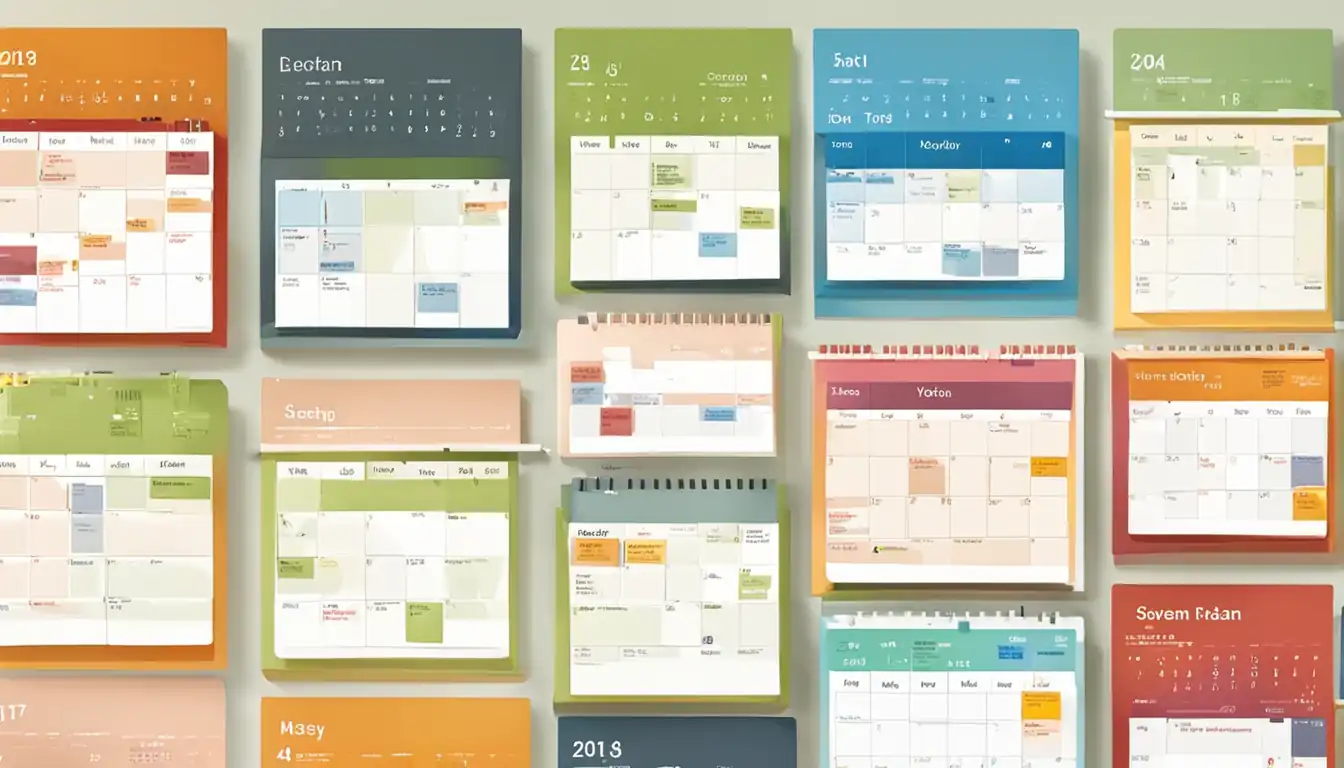Crafting a Niche Content Calendar That Works

Crafting a niche content calendar that truly works is a vital component of any successful digital marketing strategy. By honing in on the specific needs and interests of your target audience, you can create a tailored plan that drives engagement and boosts conversions. In this post, we will delve into the key components of an effective niche content calendar, provide you with a step-by-step guide to creating one, offer tips for maximizing its impact, and highlight common pitfalls to avoid along the way.
Understanding the Concept of a Niche Content Calendar

What is a Niche Content Calendar?
A niche content calendar is a strategic tool that outlines the topics, themes, and types of content to be created and published within a specific niche or industry. It helps in planning and organizing content creation efforts to align with the interests and needs of a target audience.
Why It's Crucial for Targeted Marketing Success
A niche content calendar plays a crucial role in targeted marketing success by ensuring that the content produced resonates with the specific interests, preferences, and pain points of the target audience. It helps in maintaining consistency in messaging, branding, and engagement strategies, ultimately leading to higher levels of audience engagement and conversion rates.
Key Components of an Effective Niche Content Calendar
Crafting a niche content calendar that works requires careful planning and consideration of key components. By incorporating these elements into your calendar, you can ensure that your content strategy is aligned with your goals and resonates with your target audience.
Core Elements Every Calendar Should Include
Content Themes: Define overarching themes that align with your niche and resonate with your audience. This will help guide the direction of your content and maintain consistency across all platforms.
Keyword Research: Conduct thorough keyword research to identify relevant terms and phrases that will attract organic traffic to your content. Incorporate these keywords strategically throughout your calendar to improve SEO performance.
Content Types: Diversify your content types to cater to different preferences within your audience. Consider incorporating blog posts, videos, infographics, and social media posts to keep engagement high.
Publishing Schedule: Establish a consistent publishing schedule to maintain momentum and keep your audience engaged. Whether it's daily, weekly, or monthly updates, stick to a routine that works for both you and your audience.
Promotion Strategy: Develop a promotion strategy that complements your content calendar. Utilize social media, email marketing, influencer partnerships, and other channels to amplify the reach of your content.
Tailoring Your Calendar to Specific Audience Needs
When crafting a niche content calendar, it's essential to tailor it to the specific needs and preferences of your target audience. By understanding their interests, pain points, and behaviors, you can create content that resonates on a deeper level.
"Personalization is key when it comes to engaging with a niche audience. Take the time to understand what matters most to them and tailor your content accordingly."
Audience Persona Development: Create detailed audience personas based on demographic information, interests, challenges, and goals. Use these personas as a reference point when planning content topics and messaging.
Feedback Loop Integration: Incorporate feedback mechanisms such as surveys, polls, comments sections, and social media interactions into your calendar. Use this feedback to refine future content ideas and improve engagement.
Seasonal Relevance: Consider seasonal trends and events that are relevant to your niche when planning out your calendar. Capitalize on holidays, industry conferences, or trending topics to stay current and capture attention.
Performance Tracking: Implement analytics tools to track the performance of your content calendar over time. Monitor metrics such as website traffic, engagement rates, conversion rates, and social media shares to gauge success.
By incorporating these core elements into an effective niche content calendar tailored specifically for your audience's needs, you can maximize the impact of your content strategy and achieve long-term success in driving organic traffic and engagement within your niche market.
Step-by-Step Guide to Creating Your Niche Content Calendar

Gathering the Right Tools and Resources
Crafting a successful niche content calendar starts with having the right tools and resources at your disposal. Consider using content management systems like WordPress or HubSpot to organize and schedule your content. Additionally, utilize keyword research tools such as SEMrush or Ahrefs to identify relevant topics for your niche.
Mapping Out Your Content Strategy Month by Month
Identify Key Themes: Start by determining the overarching themes you want to focus on each month. These themes should align with your niche and target audience's interests.
Create a Content Calendar Template: Develop a template that outlines the specific types of content you plan to create each month, such as blog posts, videos, or social media updates.
Set Realistic Goals: Establish achievable goals for each piece of content, whether it's increasing website traffic, generating leads, or improving brand awareness.
Schedule Content Creation: Assign deadlines for creating and publishing each piece of content on your calendar. This will help you stay organized and ensure timely delivery.
Monitor Performance: Regularly track the performance of your content using analytics tools like Google Analytics or social media insights. Use this data to refine your strategy and make informed decisions moving forward.
"Consistency is key when it comes to maintaining a successful niche content calendar. By following these steps and staying organized, you can effectively engage your audience and drive results."
Tips and Tricks for Maximizing the Impact of Your Niche Content Calendar
Crafting a niche content calendar that works requires careful planning and strategic thinking. Here are some tips and tricks to help you maximize the impact of your content calendar:
Leveraging Seasonal Trends in Your Industry
One key strategy for creating a successful niche content calendar is to leverage seasonal trends in your industry. By aligning your content with relevant holidays, events, or trends, you can capture the attention of your target audience and drive engagement. Consider creating themed content around major holidays or industry-specific events to keep your audience interested and coming back for more.
Creative Ideas for Engaging Your Target Audience
In addition to leveraging seasonal trends, it's important to come up with creative ideas for engaging your target audience. Think outside the box and consider different formats such as videos, infographics, or interactive quizzes to keep your content fresh and engaging. You can also experiment with different types of content such as how-to guides, case studies, or interviews to provide value to your audience and establish yourself as an authority in your niche.
By incorporating these tips and tricks into your niche content calendar, you can create a well-rounded strategy that resonates with your target audience and drives results. Remember to track the performance of your content regularly and make adjustments as needed to ensure that your calendar continues to deliver value over time.
Common Pitfalls to Avoid When Managing a Niche Content Calendar
Overlooking Important Dates and Deadlines
One common pitfall when managing a niche content calendar is overlooking important dates and deadlines. It's crucial to stay organized and keep track of key dates such as product launches, industry events, holidays, or any other significant milestones that may impact your content strategy. By incorporating these dates into your calendar, you can ensure that your content is timely and relevant.
Ignoring Data-Driven Insights for Content Adjustment
Another pitfall to avoid is ignoring data-driven insights for content adjustment. Analyzing metrics such as website traffic, social media engagement, and keyword performance can provide valuable information on what types of content are resonating with your audience. By leveraging this data, you can make informed decisions on which topics to focus on, how to optimize existing content, and when to adjust your publishing schedule for maximum impact. Remember, data should drive your content strategy to ensure its effectiveness in reaching your target audience.
Conclusion
In conclusion, a well-crafted niche content calendar can be a game-changer for your marketing efforts. By understanding the concept, incorporating key components, following a step-by-step guide, implementing tips and tricks, and steering clear of common pitfalls, you can create a calendar that resonates with your audience and delivers real results. So roll up your sleeves, get creative, and start crafting a niche content calendar that works for your brand today!